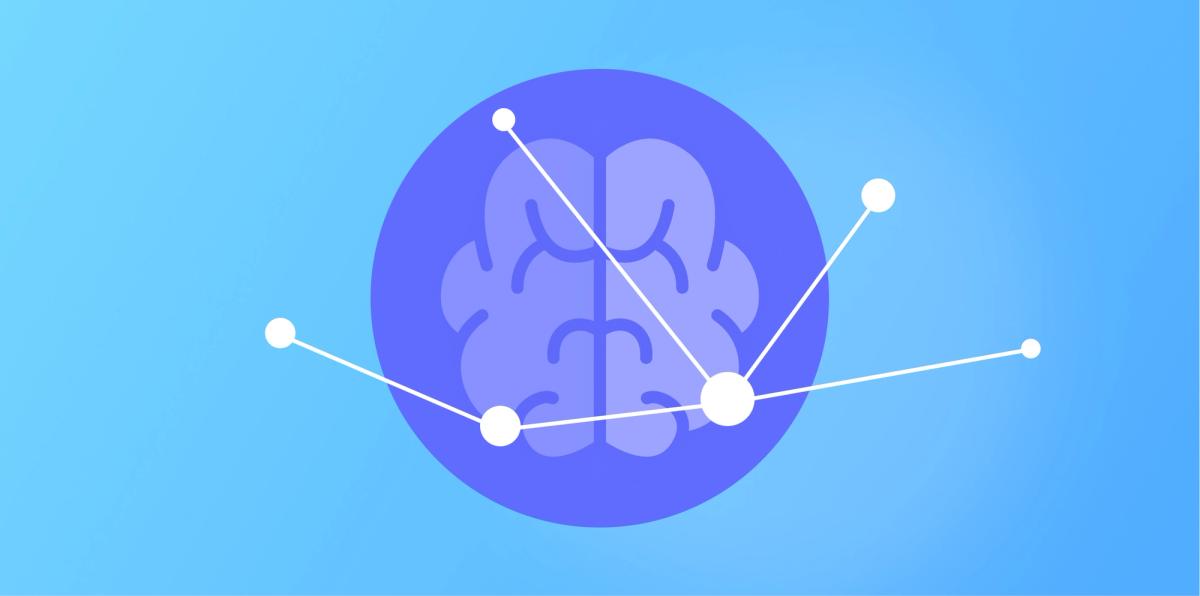Generative AI: What it is and why it matters

Generative AI 101
Generative AI is a rapidly evolving field within the broader realm of artificial intelligence (AI), and it’s having a massive effect on the way we work, communicate, and create. While most people are familiar with AI in the form of machine learning, natural language processing, and computer vision, generative AI is a relatively new area of research that is already transforming a wide range of industries. But what exactly is it? And why does it matter? Let's dive in and explore.
What is generative AI?
Generative AI is a type of artificial intelligence that uses machine learning algorithms to generate new content. Unlike traditional AI, which is programmed to respond to specific inputs, generative AI is designed to be creative and produce original outputs. This can include anything from art and music to text and even entire virtual worlds.
While traditional AI approaches are based on rules and patterns, generative AI relies on models that learn from large amounts of data and can then generate new content that is similar in style and structure to the data it was trained on.
How does generative AI work?
Generative AI works by using machine learning algorithms to analyze existing data and generate new outputs based on that data. This is done through a process called "training" or “deep learning,” where neural networks are trained on large datasets of images, videos, or text. The machine learns how to identify patterns and generate new content based on those patterns. Once trained, the machine can generate new outputs that are similar to the training data, but also unique and original.
Essentially, generative AI tools like ChatGPT are designed to generate a “reasonable continuation” of text based on what it’s seen before. It takes knowledge from billions of web pages to predict what words or phrases are most likely to come next in a given context and produces output based on that prediction.
When it comes to writing, the AI model goes word by word and learns how the sentence would continue. So instead of asking it a question, you could also give it a half-finished sentence for it to complete to the best of its knowledge, using the most likely words to be picked next in the sequence.
ChatGPT is part of a family of neural networks known as GPTs, or "Generative Pre-trained Transformers." These networks are "pre-trained" on a massive dataset of text, which enables them to generate output that is stylistically similar to the input they were trained on.
One of the most popular techniques used in generative AI is called generative adversarial networks (GANs). GANs involve two networks: a generator network and a discriminator network. The generator network creates new data samples, while the discriminator network tries to distinguish between the generated data and real data. Over time, the two networks learn from each other and the generator network becomes better at creating more realistic and believable data samples.
Examples of generative AI
The best and most famous example of generative AI is, of course, ChatGPT, a large language model trained by OpenAI, based on the GPT-3.5 architecture. ChatGPT is capable of generating natural language responses to a wide range of prompts, including writing poetry, answering trivia questions, and even carrying on a conversation with a user.
DALL-E is the image-generating sibling of ChatGPT. Also developed by OpenAI, the AI system can generate images from textual descriptions. For example, if you give DALL-E the prompt "an armchair in the shape of an avocado," it will generate a completely new image of an avocado-shaped armchair.
There are dozens (if not hundreds) of apps and tools using AI, including Collato. Originally built on OpenAI, we’ve now built an in-house semantic search engine based on state-of-the-art AI models. This allows us to be more reliable, scalable, faster, and meet German data regulations.
Collato uses generative AI in our semantic search: When a user asks a question, our AI model first analyzes the question for its underlying meaning and then finds the best search results. Generative AI is then used to formulate an answer to the original question: This answer is not a direct quote from the documents it’s based on, but a completely original, human-sounding answer. However, to formulate the answer, the AI is strictly limited to the content available within the knowledge that a user explicitly added to Collato to ensure reliability and relevance.
Why should we care about generative AI?
So why does generative AI matter? If you haven’t figured it out already, AI is transforming the way we work in an enormous range of industries, from entertainment to art to healthcare and finance. It’s able to solve complex problems almost instantly. Suddenly, tasks that required creativity and imagination are now instantly generated by machines.
This has obviously raised concerns, not only about job security, but also around bias in training data, misuse in the creation of misleading content, ownership, and data privacy. This is why ethics in AI is becoming increasingly important.
Ethics & generative AI
AI ethics is a new field that is gaining importance as people realize that the development, use, and deployment of AI needs to be governed in some capacity to prevent misuse. Some of the key areas of focus in AI ethics include:
Transparency and accountability: AI systems should be transparent, and their decision-making processes should be explainable and accountable.
Privacy and security: AI systems should respect the privacy and security of individuals, and their data should be protected from unauthorized access and misuse.
Bias and fairness: AI systems should be designed and used in a way that does not discriminate against any individual or group.
Human control and oversight: Humans should remain in control of AI systems and be able to intervene if necessary.
Social responsibility: AI developers and users should consider the impact of their systems on society and the environment, and take steps to mitigate any negative effects.
AI ethics is an important area of research and development as AI continues to become more integrated into our daily lives. It’s important to ensure that AI is developed and used in a way that is responsible, ethical, and beneficial to society as a whole.
How can we use generative AI?
There are so many ways generative AI is already being used, with new use cases being created all the time. Its ability to learn and mimic human-like behaviors and patterns has revolutionized the way we work in many industries. Here are some examples of how generative AI is changing the game:
🎮 Gaming: Generative AI has been used in the gaming industry by companies like Ubisoft to create game worlds and generate realistic-looking environments. Generative AI can be used to create new levels and characters in video games, keeping players engaged and entertained for longer periods of time.
🎵 Music: Original music compositions are being created by AI, with companies like AIVA (Artificial Intelligence Virtual Artist) using it to create music that has been used in films, advertisements, and other media.
👗Fashion: The fashion industry is using AI to create new designs. Brands like H&M and Tommy Hilfiger are generating new designs based on existing styles or creating entirely new designs based on data about customer preferences and trends.
🩺 Healthcare: Generative AI can be used to create personalized treatment plans for patients based on their medical records and other data. This technology can help doctors and healthcare providers make more informed decisions about patient care.
🗣️ Language: Generating natural language text is quickly becoming one of the most popular AI-use cases. Chatbots and virtual assistants are used to provide more human-like interactions with users.
📣 Advertising: Marketers and advertisers are using generative AI to create personalized advertising messages for consumers and analyze data about consumers' interests and behaviors.
👾Virtual reality: By using generative AI to create detailed models of physical environments, virtual reality experiences can be made more immersive and realistic than ever before. In fact, some game developers are already using generative AI to create dynamic, procedurally generated worlds that are different every time a player enters the game.
💊Medicine: Researchers are using generative AI to create models that can generate new molecules and drug compounds. By using generative AI, researchers can quickly and efficiently explore vast chemical spaces and identify potential new drugs that would be impossible to find using traditional methods.
Limitations of generative AI
As with any new technology, generative AI also presents potential limitations and challenges that need to be addressed to ensure responsible and ethical use. Data bias, overfitting, computational resources, ethical concerns, and lack of interpretability are all issues that need to be carefully considered and addressed:
Data bias: Generative AI relies on large datasets to learn patterns and generate outputs. If the dataset used to train the model is biased, then the generated outputs may also be biased. This can lead to unintended consequences and negative impacts, such as perpetuating stereotypes or discrimination.
Overfitting: Generative AI can also suffer from overfitting, which occurs when the model becomes too specialized in the training data and is not able to generalize to new data. This can result in unrealistic or irrelevant outputs.
Computational resources: Training generative AI models can be computationally expensive and time-consuming. Large datasets and complex models require significant computational resources and may not be feasible for smaller organizations or individuals.
Ethical concerns: Generative AI has the potential to create highly convincing outputs, such as deepfake videos or text that mimic human speech patterns. This can raise ethical concerns, such as the potential for misuse or manipulation.
Lack of interpretability: Generative AI models can be difficult to interpret, meaning that it can be challenging to understand how they generate their outputs. This can limit their transparency and accountability, making it difficult to identify and address potential issues.
Addressing these limitations will be critical to ensuring that generative AI is developed and deployed in a responsible and ethical manner.
What comes next?
Generative AI has proven to be a powerful technology with many revolutionary applications across various industries. From content creation to healthcare, generative AI has the ability to generate sophisticated and personalized outputs that can help us work smarter and more efficiently.
Ultimately, the future of work with generative AI will be shaped by how we harness its potential. The technology is expected to continue to grow and evolve, with even more innovative and impactful use cases emerging. As AI advances, it will be important for organizations and individuals to stay up-to-date on the latest developments and ensure that they are using generative AI in a responsible and ethical manner. Stay tuned to Collato’s blog for the latest in AI and the future of work!




